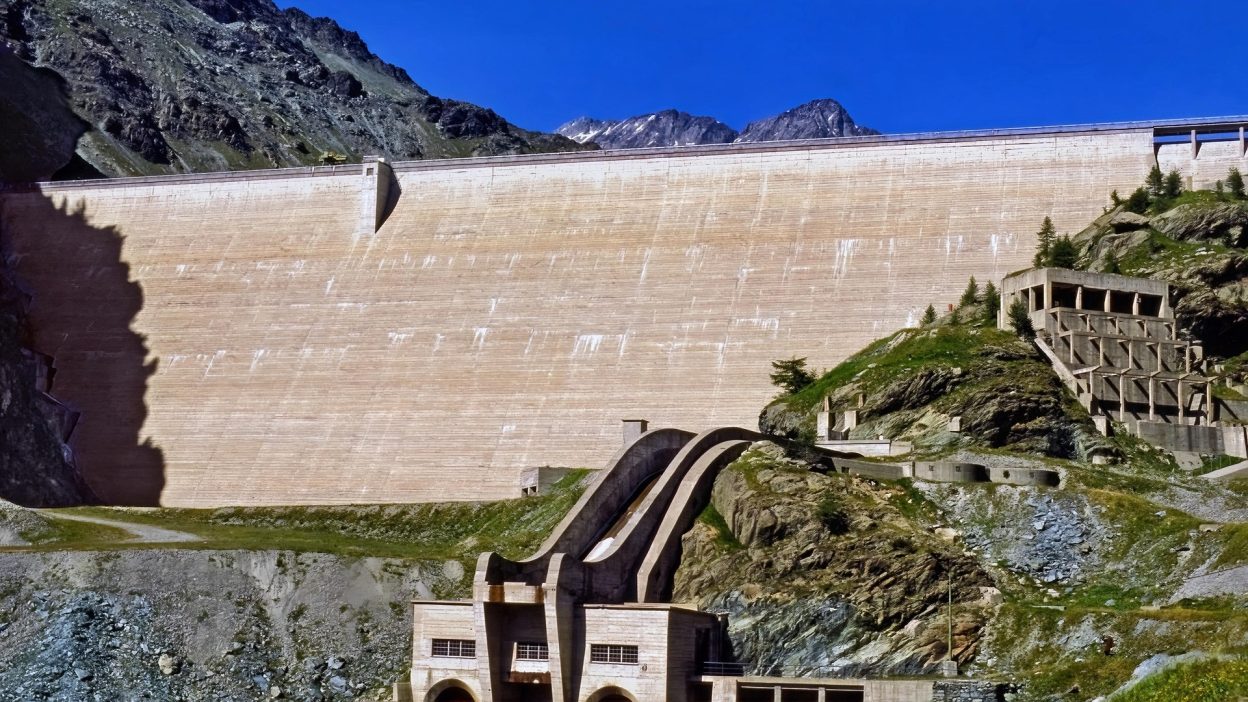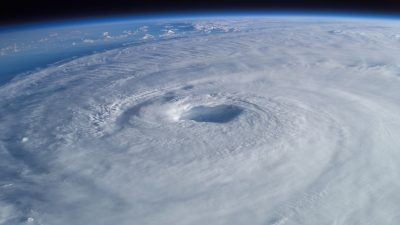How One Catastrophic Disaster Exposed China’s Deadly Infrastructure Failures
The Banqiao Dam disaster remains one of the most devastating and overlooked events in modern history. On the 8th of August 1975, Typhoon Nina unleashed an immense downpour, leading to the catastrophic failure of the Banqiao Dam in China. The flood that followed destroyed entire communities, tore apart infrastructure, and tragically claimed the lives of hundreds of thousands. The aftermath of the event marked a turning point in China’s approach to disaster management, infrastructure safety, and government transparency.
Before the disaster struck, the Banqiao Dam was seen as a symbol of China’s rapid development. However, its failure exposed serious flaws in both its construction and the country’s preparedness for such catastrophic events. The tragedy forced China to rethink its approach to major construction projects and highlighted how even the most impressive infrastructure could be brought down by extreme natural events. The effects of this disaster still influence China’s disaster management strategies today.
Typhoon Nina: The Unseen Force That Led to Unimaginable Destruction
Typhoon Nina’s power was vastly underestimated, and its far-reaching impact caught many off guard. The torrential rains from the storm caused the Banqiao Dam to collapse under the sheer weight of the water. The storm’s ferocity and the subsequent failure of the dam resulted in an unimaginable flood that devastated entire regions.
The typhoon brought one of the heaviest rainfall events on record, and the authorities failed to assess the dam’s vulnerability adequately. The combined effect of the intense storm and the failure to take proper precautions became the catalyst for one of China’s deadliest natural disasters. Typhoon Nina’s role in this catastrophe changed how the country approaches large-scale flood control systems and crisis management.
The Human Toll: Over 200,000 Lives Lost in the Banqiao Disaster
- More than 200,000 fatalities: The Banqiao Dam failure resulted in a flood that killed over 200,000 people. Many drowned, while others succumbed to injuries caused by the flooding.
- Millions displaced: The disaster forced around 11 million people to flee their homes, leaving entire communities homeless and reliant on emergency shelters.
- Severe injuries: Thousands suffered injuries, many of which were life-threatening. Hospitals were overwhelmed, and the medical resources available were insufficient to treat the large number of casualties.
- Health crises: The floodwaters contaminated drinking supplies, destroyed crops, and led to outbreaks of diseases like cholera and dysentery, which contributed to long-term health issues for survivors.
- Massive economic damage: The flood destroyed vast stretches of farmland, disrupted local industries, and caused economic losses that affected the region for years to come.
Government Inaction: How China Failed Its People in the Banqiao Crisis
One of the most contentious aspects of the Banqiao Dam tragedy was the response of the Chinese government. Despite early warnings of a potential disaster, the authorities took no decisive action to prevent the inevitable. Emergency measures, such as evacuation plans, were not in place, and the population was left unprepared for what was about to happen.
Following the dam’s collapse, the government’s response was slow and poorly coordinated. Rescue teams were delayed, and there was an insufficient supply of aid. In addition, the government initially downplayed the scale of the disaster, delaying outside help and suppressing information about the true extent of the damage. This only exacerbated the suffering of the affected population, who were left stranded and helpless.
The Breaking Point: How the Banqiao Dam Finally Gave Way
At 4 a.m. on 8th August 1975, the pressure from Typhoon Nina’s heavy rains became too much for the Banqiao Dam to handle. The dam had already been under stress for days due to constant rainfall, but the tipping point came when the water levels rose beyond the dam’s capacity. When the dam finally collapsed, the result was catastrophic—floodwaters surged into surrounding areas, destroying everything in their path.
The moment the dam failed, the floodwaters rushed with incredible speed. Entire towns and villages were washed away, and the human and material damage was immense. The collapse of the Banqiao Dam became a defining moment in Chinese history, deeply influencing how the country would deal with future disasters.
Could the Banqiao Disaster Have Been Averted? Uncovering the Blunders Behind the Collapse
- Dam design flaws: The Banqiao Dam was designed to withstand certain levels of rainfall, but it was not built to handle the extraordinary conditions created by Typhoon Nina. Its design, which was based on outdated assumptions, made it more vulnerable to such extreme weather.
- Lack of contingency planning: Despite warnings of heavy rain, there were no plans in place to evacuate the nearby population. The lack of foresight exacerbated the tragedy.
- Governmental secrecy: The authorities failed to disclose the full extent of the situation, withholding critical information and preventing prompt action to address the crisis.
- Ignoring warning signs: The dam’s structural strain was evident long before it collapsed, but the government chose to ignore these early warning signs, believing that the situation would resolve itself.
The Banqiao Dam Cover-Up: What the Chinese Authorities Tried to Hide
After the Banqiao Dam failure, the Chinese government took steps to hide the full scale of the disaster. Reports of the devastation were initially suppressed, and the extent of the loss of life and damage was kept from both the public and the international community. This effort to control the narrative was motivated by a desire to maintain the government’s image and avoid panic.
The authorities not only concealed the human toll but also kept information about the dam’s design flaws hidden. This cover-up delayed critical investigations and prevented transparency, allowing the government to deflect responsibility for the disaster. It wasn’t until much later that the full scope of the catastrophe became known.
Blame: Was It Nature or Human Error That Caused the Banqiao Dam Disaster?
The Banqiao Dam disaster raised the critical question of whether nature or human actions were to blame for the catastrophe. While the sheer force of Typhoon Nina was unprecedented, human decisions played a key role in the disaster. The dam’s design flaws and the lack of preventive measures were significant factors that contributed to the scale of the disaster.
The debate over the balance between natural events and human responsibility continues to this day. While Typhoon Nina’s intensity cannot be denied, the failure to properly prepare and safeguard against such an event meant that the human cost of the disaster was far greater than it should have been.
The Aftermath: What the Banqiao Disaster Taught China About Disaster Management
The Banqiao Dam tragedy had profound effects on China’s approach to infrastructure, disaster preparedness, and response. In the wake of the disaster, the government introduced new regulations to ensure that future dams were better designed and more resilient to extreme weather. Additionally, the disaster led to reforms in China’s disaster management systems, focusing on early warnings, evacuation procedures, and better coordination during crises.
The event also contributed to a greater level of transparency, with the government realising the importance of clear and honest communication in times of disaster. These changes helped improve China’s ability to deal with future catastrophes, and lessons learned from the Banqiao Dam disaster continue to shape disaster policies today.
FAQs
- How many casualties were there in the Banqiao Dam failure?
Over 200,000 people perished, either from drowning or injuries caused by the subsequent flooding. - What led to the collapse of the Banqiao Dam?
The dam’s design was outdated and unable to withstand the intensity of Typhoon Nina’s rains, leading to its catastrophic failure. - How many people were forced to flee due to the flood?
Around 11 million people were displaced by the floods, with entire towns submerged. - Was the scale of the Banqiao disaster covered up by the Chinese government?
Yes, the Chinese government initially suppressed information about the true extent of the damage, delaying international aid. - What reforms were made in response to the Banqiao disaster?
China implemented stricter dam safety regulations and improved its disaster management and response systems to prevent future tragedies.
References:
1975 Banqiao Dam Failure
Typhoon Nina–Banqiao Dam Failure
Banqiao Dam (China, 1975) | Case Study
Typhoon Nina (1975)




